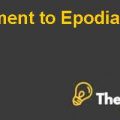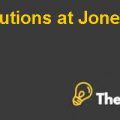Accounting Assignment Case Study Solution
Overview
1.
Name of Company: Employers Holdings Inc.
Location of Headquarters: Nevada
Primary Locations: Nevada, Florida, Columbia, and California
2.
Employers Holding Inc. has not become a mature firm in the market. The company has been operating in the insurance industry, and its target market is small and medium-sized enterprises, and small organizations.
The primary operations of the company are to provide flexible insurance services to small enterprises and organizations that are not targeted and offered by big insurance companies as these corporations may not have much flexible insurance plans for the employees.
Therefore, it can be determined that company is on the growth stage in the market. Because, the maturity of the company is on its constant growth, where company has reached at the last level of industry. But, the Employers holdings Inc. has been growing in the market, and it also has many subsidiaries in the market that have been working with different aims and objectives having one parental mission of providing services to small organizations.
Following are the subsidiaries of Employer Holdings Inc.
| Name of Subsidiary | State of Domicile |
| Employers Insurance company of Nevada (EICN) | Nevada |
| Employers Compensation Insurance Company (ECIC) | California |
| Employers Preferred Insurance company (EPIC) | Florida |
| Employers Assurance company (EAC) | Florida |
3.
(a)
The core objective of the company is to provide insurance facilities to small organizations. Since, insurance policies are required by state or provincial governments that asks companies to get each employee insured so that he could be compensated during illness, injury or disease. So, the function of the company is to provide workers compensation when they are ill, injured, or have fallen in disease.On the other hand, it can be determined the major activities of the company include providing insurance services to small organizations that require more flexible pricing and standard policies, and compensation for the employees as per required by the state or government.
(b)
Primary Goals
- Providing flexible services to the customers in the market. The customers of the company are small organizations. The target market for the company is small companies and organizations that are under pressure of the government for worker’s compensation plans. So, company has the primary goal to fulfill the needs of these customers.
- Identifying and achieving opportunities that are profitable for the company in the long-run, and has potential for growth in the market. Meanwhile, an investment decision is taken over two important factors one is growth, second is return. So, proper management of the portfolio is primary goal of the company, and to identify opportunities in the market that support prospective growth, and good return.
Strategies
- Connecting unconnected hospitals, care centers and reducing the cost of care by combining services, and task forces together at one place that would also make care better.
- Holding strong, and long relationships with those service providers.
- Settlement of claim over short period to increase customer demands.
- Diversifying the risks by involving in many available options such as reinsurance, and insurance policies.
(c.)
Opportunities and Risks
- Diversification of the risks exposure in the market.
- Offering competitive prices to the customers.
- Increasing customer base.
- Risk of huge competition in the market.
- Competitors might takeover market.
- Rising awareness among the employers is an opportunity and risk for the company.
4.
The Employers Holdings Inc. has been operating in the insurance industry. It is not the market leader but has been growing rapidly in the market. Since, it is on the growth stage, and has not become mature. It has been providing health, disability insurance policies for small organizations which is workers’ compensation related with illness, disability, disease acquired during work, and for other health benefits of the employees.
Analysis of operating efficiency, Liquidity, and Solvency
Efficiency
A/c Receivable Turnover Ratio
The accounts receivable ratio shows efficiency of the company that how much times it can convert its accounts receivable into cash in given time period. So, it can be determined that accounts receivable turnover ratio of the company in 2014 was 2.25 times, and in 2015 it increased slightly, but it decreased significantly in 2016. So, it can be said that company’s efficiency in converting it’s A/c receivable into cash has decreased or the customers are not paying on time. This is one alarming situation for the company that it should take into consideration.
Inventory Turnover Ratio
Inventory Turnover ratio measures how much times company is able to convert its inventory into sales in given time period. However, company’s inventory turnover ratio is very good. Since, it has the efficiency of converting its inventory account into sales 31 times in given time period.
Total assets turnover ratio
Total assets turnover ratio indicates how effectively the company has been making sales with respect to the deployment of the total assets each year. The total assets turnover ratio is around 0.2 on average which means that total sales of the company is equal to 20% of company’s total assets.....................
This is just a sample partial work. Please place the order on the website to get your own originally done case solution.











